The Vibes Still Run Deep in This Topanga Canyon Artist Compound
On a recent January morning, Mike Milosh sat on his deck near the top of Topanga Canyon, about 25 miles and a million mind frames west of downtown Los Angeles. There was a chill in the air despite the clear blue skies. His partner Geneviève Medow-Jenkins would soon join him, but first she had to pull a tick off their dog, Hero. Such is life in the mountains above the Pacific Ocean, where people can still get their groceries delivered from the Erewhon in Calabasas, but rattlesnakes are a real threat during hikes through the woods.
Milosh, 45, is best known for the airy, seductive music he puts out under the name Rhye. Medow-Jenkins, 29, is best known for Secular Sabbath, a music and wellness event series she started in Los Angeles. They began dating five years ago. Their origin story is pure LA: She wanted him to play her ambient music night in Hollywood. He was going through a divorce. They spent a weekend shooting photos of each other in Joshua Tree, even though they both say they don’t like getting their picture taken. They’re the latest in a long historical line of far out creatures who have come to the city to bask in its beautiful weirdness, inventing and rediscovering all manners of self-expression.
On January 22, Milosh released Home, the fourth Rhye album. Rhye was originally a collaboration with Danish producer Robin Hannibal, but he left after the 2013 debut, Woman. Milosh has continued the project, embellishing Rhye’s soulful pop with traces of disco, classical music (he played the cello and practiced ballet growing up) and Gregorian chant. There’s a sophisticated quality to the whole endeavor. It’s both adult and contemporary, but lacks the banality that’s usually implied when those two words are conjoined. Sade remains Rhye’s most persistent musical comparison and there has always been some gender confusion around Milosh’s singing voice, which only seems to get higher as time goes on. He says he planned to title the new album Home even before he was largely confined to one.
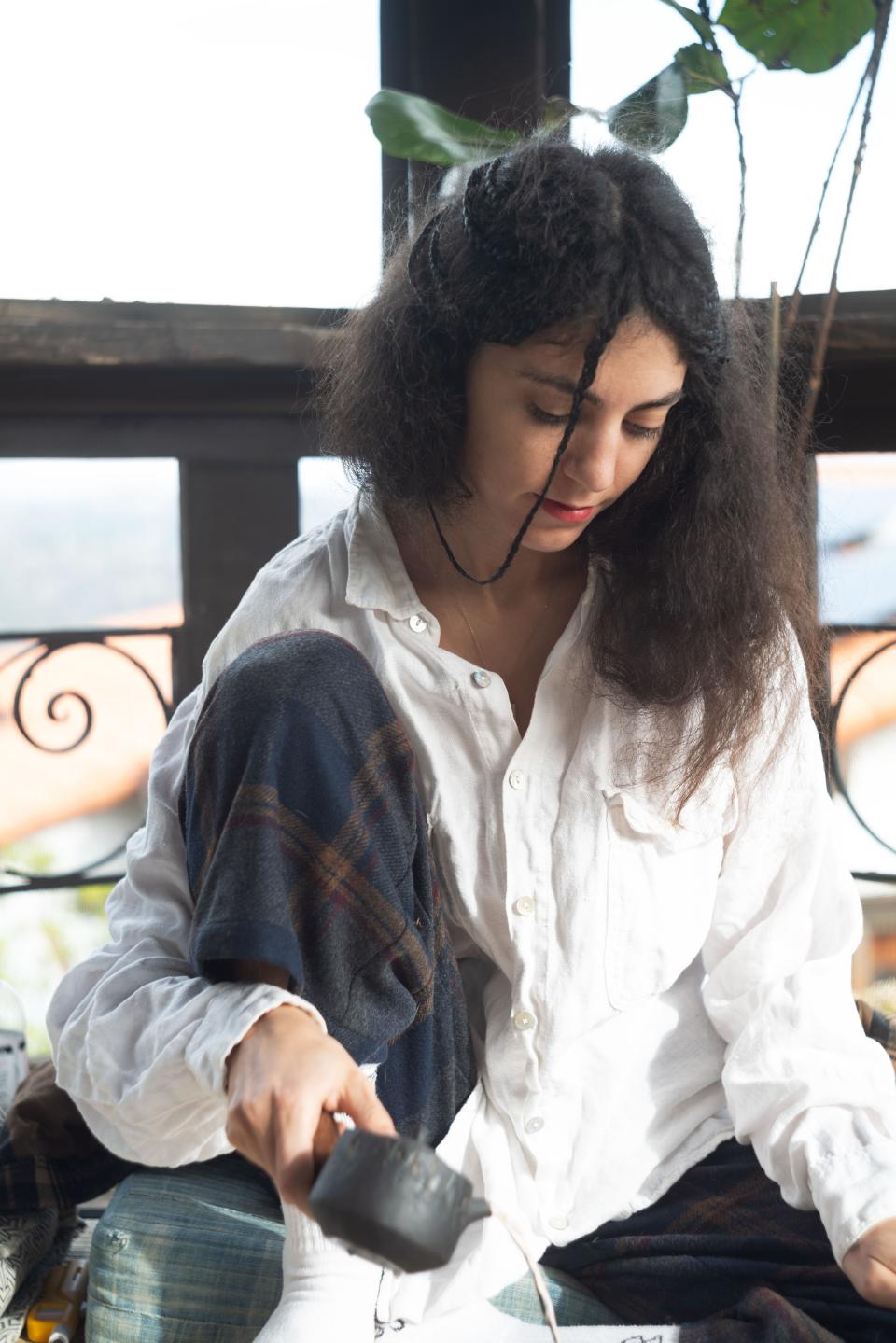
Much of the album was recorded in Milosh’s Topanga studio, which he’s filled with an array of keyboards and a custom-built piano. The musical history of Topanga Canyon is associated with the newly-moneyed bohemia of the late 1960s—previous residents include Neil Young, Joni Mitchell and members of the Doors. There have been run-ins with the past. It’s inevitable around here. “There was one day we were driving and Stevie Nicks almost hit me,” says Milosh. “She was like a demon.”
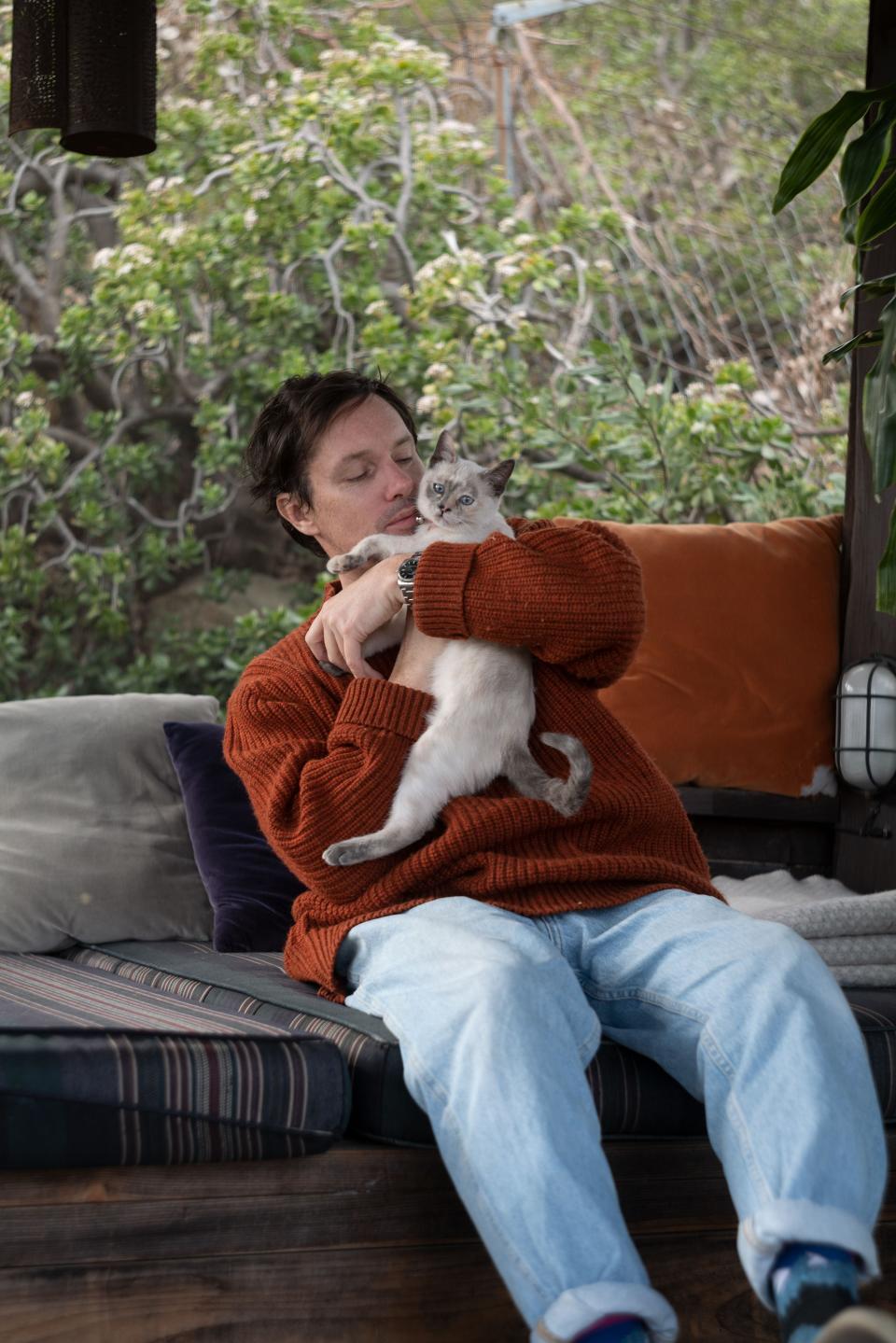
During the pandemic, they’ve become part of a new musical community. “We have, like, 10 friends now,” says Medow-Jenkins, though that small circle includes both Diplo and Beck, who have turned into frequent companions and occasional collaborators in recent months.
Diplo and Medow-Jenkins have been friends for years, but after she introduced him to Milosh, they too became tight. In the early weeks of the shutdown, they’d go over to Diplo’s place every Friday and get weird for Corona Sabbath—one of the four livestreams the DJ and producer broadcasts across social media from his place in Beachwood Canyon. During these sessions, Diplo would play leftfield cuts and Milosh would often improvise effects-laden vocals on top of them. Those nights helped lead to the ambient-inspired album MMXX that Diplo released last September. The two have been working on music together, but nothing is currently finished and there are no release plans yet.
Milosh and Medow-Jenkins met Beck before the pandemic, when Diplo invited them to a luxury box at a Clippers game. After Beck introduced himself to her when she was struggling to understand the rules (he mainly goes to NBA games because his son is a fan), the three of them hit it off. “When he's like, ‘Can I stay in touch with you guys?’ I'm not thinking that he's hitting on my girlfriend,” says Milosh. “He's actually, like, a really nice guy.” They’ve since posted videos on Instagram Stories of Milosh and Beck performing acoustic renditions of Crosby, Stills, Nash & Young’s “Helpless” and Rhye’s own breakout song, “Open.”
For most of his adult life, Milosh led a fairly nomadic lifestyle. Beyond all the time touring, he spent stints in Thailand, Holland, Germany and Montreal before coming to Los Angeles. Medow-Jenkins grew up in Big Sur, the Central Coast town fabled for its isolation and natural beauty. Most of the people she grew up with never left, as befits a place many of its residents consider paradise. She went to Reed College in Portland, Oregon, and did a semester in Berlin before moving to Los Angeles after graduation. While in her early twenties, she worked as a behind the scenes photographer during a Pharrell Williams world tour, and up until the live music industry’s almost complete shutdown in March of 2020, she often joined Milosh on the road.
Before they came to Topanga, their housing situation was far more urban. “When I first moved to L.A., I wanted the opposite of Big Sur,” says Medow-Jenkins. “I always wanted to live in a loft. I had this really unique godmother who was a psychic who lived in New York. When I was growing up, she brought me to New York and I saw her loft and she kind of lived like Big. She had a huge trampoline in it and I was like, this is what I want.” She found one in downtown LA, and eventually Milosh moved in. In 2019, her father learned he needed a double lung transplant and she became his primary caregiver. Before her father’s operations, the three of them relocated to a rented house by the beach, because it was close to where he was getting his treatment.
But after her father’s successful transplant, the cramped living situation started to get to them. One day Medow-Jenkins found the listing for their current house while scouring Zillow. It hit all her key search terms: “big windows,” “hardwood floors,” “lots of nature,” “Topanga.” They had no plans at the time to become homeowners, so they casually went to the open house as something to do on a Sunday. When they parked their car and saw the owner smiling at them as she drove by in the opposite direction, Milosh and Medow-Jenkins got a shared, weird feeling that they might have just pulled into where they were going to live.
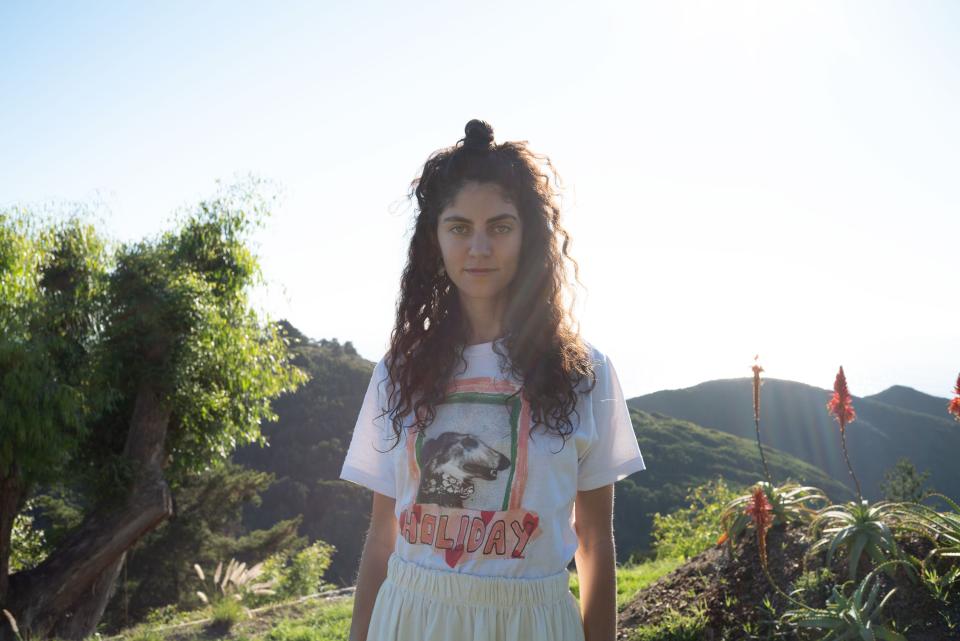
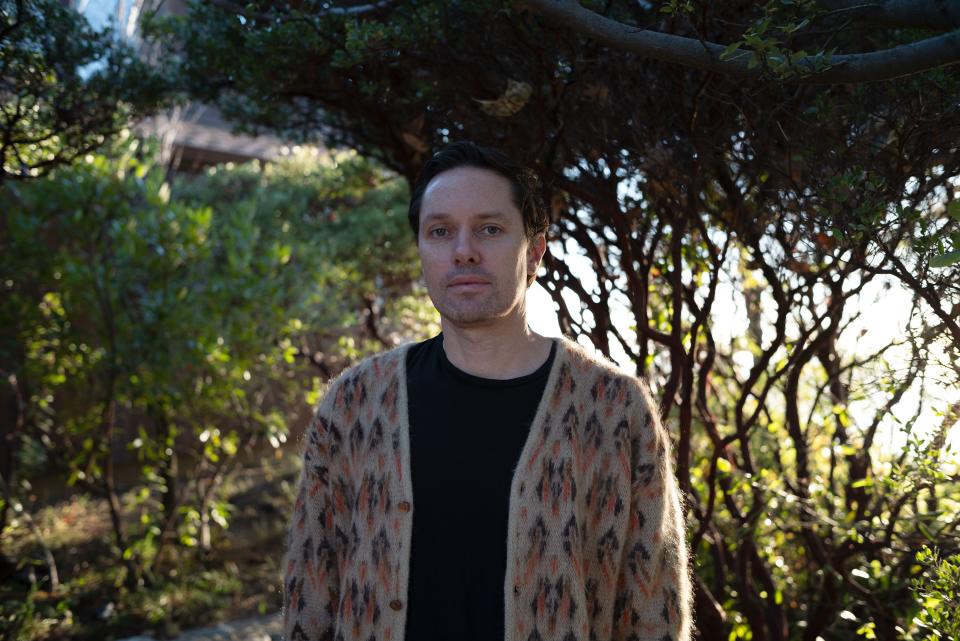
Later they learned that the previous owner had done a ceremony with the realtor. “To call in someone that would really steward the land,” Medow-Jenkins explains. There were other interested buyers, including members of the tech industry who wanted a secondary or weekend place, who put in higher offers. After Medow-Jenkins wrote the owner a letter about all the creative endeavors they hoped to utilize the property for, theirs was accepted.
The new house has become the homebase for their pursuits and free zone for experimentation. And, let’s be honest, they were always going to do some experimenting. They’ve shot music videos on the grounds, Milosh composed a soundtrack for a film, and Medow-Jenkins has been set up in the gazebo working on a TV show with her writing partner. Her dad now lives in the guest house next to Milosh’s studio and opens all the doors to listen during recording sessions.
Medow-Jenkins was raised at the Esalen Institute, which has attracted thought-leaders, weirdos, and in recent years Silicon Valley denizens to its idyllic spot along the ocean. “It's going through a weird phase right now,” says Medow-Jenkins. When she was young, she roamed Esalen’s grounds with a small pack of kids whose parents worked there and ate with a hundred people every night. “Especially as I get older, I feel a desire to raise my kids the way that I was raised,” says Medow-Jenkins. “Topanga, if we are going to stay in L.A., felt like the closest thing for me to home.”
Medow-Jenkins’s upbringing was far different from Milosh’s, in Toronto, which became glaringly evident during an early nude hot-tub encounter with her mom. But the differences between and Canada and California ran deeper than clothing, or a lack thereof. “It carries over into the thought process when you're [in Toronto]: you don't take as many risks creatively because it's actually a very conservative city. L.A. is a rougher city in a way, but it's really creatively open.”
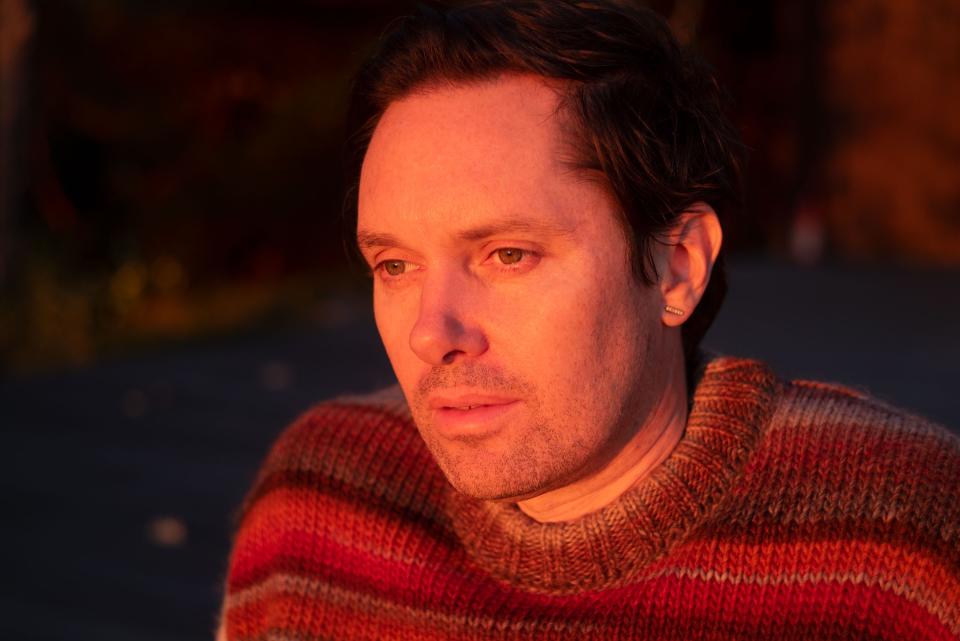
Over time, Milosh has found his personality to be amenable to the California lifestyle. When he realized how much music videos cost before the release of his second album, Blood, he bought a professional-grade camera and they set about making the videos themselves. To cut back on the cost of editors, he taught himself how to do it with the help of YouTube tutorials. They shot all of the album art for Home on the house’s grounds, often with Medow-Jenkins serving as the model. “It is a very West Coast mentality that we're doing things no matter what,” he says. “It's infectious in a positive way. You get this charge of, I'm going to make this album, no matter what. I'm going to make this music video, no matter what. We're going to do these events, no matter what.”
As the pandemic has continued on for nearly a year, like many of us, Milosh and Medow-Jenkins have come to define time through the different endeavors they’ve used to occupy their energy. “We started with Corona Sabbath, then we went through the African dance phase, and then we went through the going to the desert phase,” says Medow-Jenkins. “Now we're in the Malibu-playing-games-and-going-to-the-beach phase.”
One constant has been their devotion to Secular Sabbath. Before mass gatherings became verboten, Medow-Jenkins developed these events into distinctly LA all-nighters that featured soothing musical performances, as well as activities like tea ceremonies, tarot card readings, sessions by healing practitioners, and meals prepared by people who describe themselves as “holistic chefs.” Milosh has become her partner in the project. They hope to eventually expand Secular Sabbath to include a record label and a creative space with echoes of Esalen.
Until the pandemic ends, many of the couple’s plans will remain in the ideation stage. For now, they’ve mostly continued on with Secular Sabbath as virtual events, where Milosh performs improvised ambient music. During the pandemic they’ve held them at a range of locations, including outside of James Turrell’s Roden Crater in Arizona. But most of them have happened at the Topanga Canyon home. The stage can be anywhere, even on top of their concrete fire bunker at six in the morning. They don’t think the neighbors mind—another benefit of life in Topanga. “It’s quieter here, and it’s quieter in the world right now,” says Medow-Jenkins. “So we have that.”
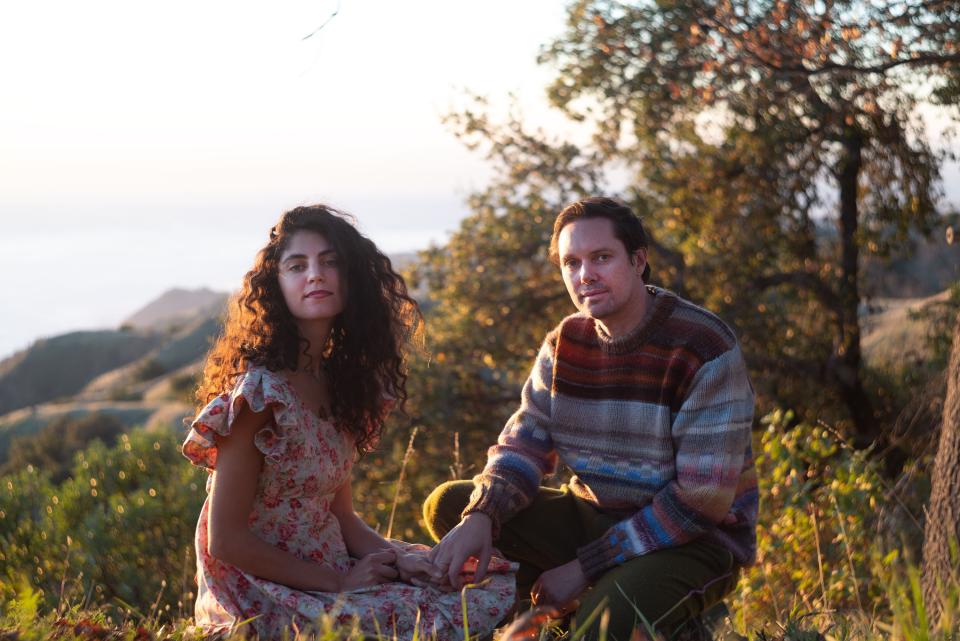
Originally Appeared on GQ

